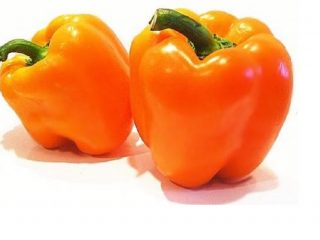Content
A true southerner, a lover of sun and warmth, sweet peppers have long been established in gardens and vegetable gardens. Every gardener, to the best of his ability, tries to get a harvest of healthy vegetables. Gardeners who receive an early harvest feel especially proud. The right variety will provide this opportunity.
Description
The Boneta pepper variety is early ripening; 85–90 days pass from germination to the appearance of the first fruits. Seeds for seedlings must be sown in February. Make up the soil mixture for Boneta pepper seedlings from soil, humus, and peat. You can add 1 tbsp. spoon of wood ash per 1 kg of prepared soil. Place the soil in the containers in which you will grow the seedlings, water well, and plant the seeds. Do not deepen it too much, maximum 1 cm. Cover with film or cover with glass. At a temperature of +25 degrees, the first shoots will appear in a week. The Boneta variety is distinguished by the appearance of friendly mass shoots. If you observe the temperature and light conditions, you will get strong seedlings of the Boneta variety, which in May will be ready for transplanting into open ground or a greenhouse.
After onions, cucumbers, pumpkins, cabbage, carrots and zucchini, peppers grow best. After tomatoes, eggplants, and potatoes, as a rule, it is not possible to get a decent harvest. Sweet pepper Boneta grows up to 50 – 55 cm. The bush is powerful and strong. The planting scheme for plants of this variety is 35x40 cm. 4 plants per 1 sq.m. Be sure to tie up the bushes, otherwise you cannot avoid breaking off branches with fruits. The photo shows the Boneta variety:
Regular care of peppers includes watering, loosening and feeding. Do not use cold water for irrigation. Warm, settled water at a temperature of +25 degrees is best. Loosening is also a mandatory ritual in caring for peppers. Peppers need regular feeding. After planting the seedlings in the ground, after 2 weeks, carry out the first fertilizing with nitrogen fertilizers. Thus, the plant will grow green mass and a developed root system. During the period of fruit formation, it is necessary to feed with phosphorus fertilizers. It is better to use bird droppings for feeding. It is infused for a week and then diluted with water 1:10. It is also very good to use mulch. The row spaces are covered with straw, mowed grass without seeds, sawdust or peat. Goal: reduce height weed, retain moisture, which is especially important in the heat. Some tips for growing peppers are shown in the video:
The first fruits of the Boneta variety will appear in July. At technical maturity they are ivory or slightly greenish-white, at biological maturity they are orange or bright red. The shape is trapezoidal. The weight of fruits of the Boneta variety is from 70 – 200 g, they have 3-4 chambers, the thickness of the fruit walls is 6 – 7 mm. The fruits of the Boneta pepper variety are glossy and dense. They tolerate transportation well. Productivity: from 1 sq.m you can get 3.3 kg of peppers. Fruits with a pleasant, delicate taste and peppery aroma are suitable for universal use in cooking: in first and second courses, in salads, for freezing and in preparations for the winter. 50 – 80 percent of the vitamins are retained in processed peppers.
Fresh peppers are a storehouse of vitamins and microelements, they will restore and rejuvenate the body, improve the condition of the skin, hair, nails, and relieve depression.Improves appetite and digestion; pepper contains fiber. Calorie content is extremely low: 24 calories per 100 g of product. Eating pepper can lower blood pressure, thin the blood, and prevent the formation of blood clots. Those who have low blood pressure can eat the vegetable, but with caution.













Red Bonnet pepper is at technical ripeness; I planted it last year and sowed it this year too.